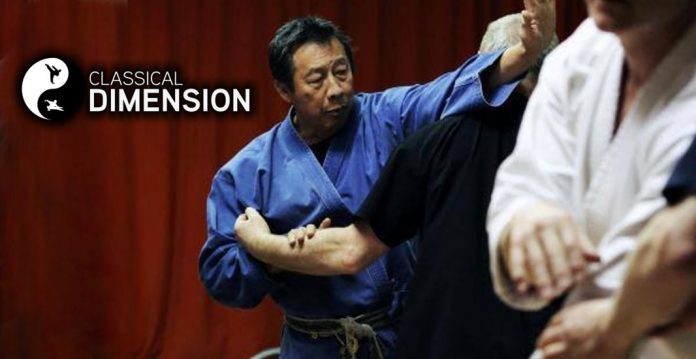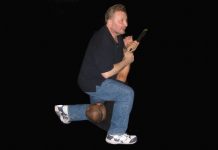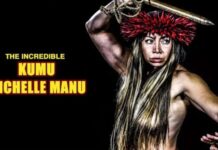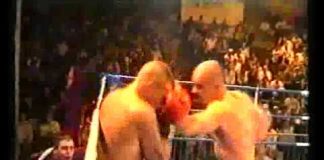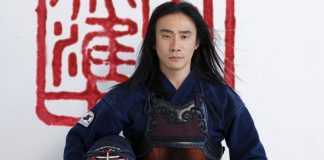The majority of martial artists are looking for self-defense and it is the hidden side of kata where real self defense is found. This is where my specialty comes in.
By Richard Cotterill ~ Willie Lim is presently 7th Dan in Tae Kwon-Do and Ryukyu Kernpo. He also teaches Tai Chi and Balintawak (Arnis) professionally. He has been involved in Martial Arts since 1960. He pioneered Tae Kwon-Do and Tai Chi in New Zealand, teaching professionally since 1970. He has taught in New Zealand, Australia, USA, Singapore and Malaysia. He is presently based in Scottsdale, Arizona and continues to travel extensively to reintroduce the old way of Tae Kwon-Do Karate.
“My specialty is learning how to analyze a hyung/form and relate it to realistic self defense. The essence of the art is in the form. This is how the true technique were handed down, but present day instructors were taught only the watered down system. Hyungs were analyzed alphabetically, this is a very simplistic way, yet when we get to Black Belt we still do things this way. In the original hyung/kata are the time tested techniques of the master. It takes years of study to analyze it and relate it to self defense and to make it work. By learning to analyze all the body positions, foot work and hand position only then can the real potential of the art be found. This then is combined with the understanding of nerve centers and body reactions. A hyung/kata is like a puzzle, what may appear to be an interpretation of movement, may be the opposite. The master who developed it, did so so that his techniques could live on. It took a lifetime to develop his technique, it will take another lifetime to discover all the hidden meanings and perfect their use. This is what I specialize in”.
COMBAT: Can you tell me a little about yourself?
WILLIE LIM (W.L.): I started training in 1961 in Penang, Malaysia. For the first two years I practiced Kyokushinkai Karate and also Tai Chi under Yeo Cheng Hoe, one of Chen Man Ching’s Malaysian students. Then in 1963 I went to practiced Taekwon-Do under C.K.Choi, a first generation Korean instructor.
COMBAT: From previous articles written about yourself, we understand you pioneered Taekwon-Do in New Zealand. Can you tell us about this.
Yes, I introduced Taekwon-Do into New Zealand, through the University, in 1970. After completing my degree at the university, I dropped out of my masters program because Taekwon-do was expanding at such a rate that it required all of my attention n. We originally started with 14 members and it grew to over 2000 members. During this time I started the first full-time Donjang. This developed further into a full-time leisure complex which is still in existence to this day.
COMBAT: New Zealand is quite geographically isolated. Did this create any obstacles for you in the progression of your martial arts knowledge?
No, in fact, just the opposite. I brought many renowned martial artists from around the world.
COMBAT.: Can you name some of them?
Yes, the instructors included Hee II Cho of I.T.F. Taekwon-Do; Fumio Demura of Shinto Ryu; Bill Wallace; Benny the Jet; Wally Jay; Remey Presas; George Dillman and Bobby Taboada of Balintawak (arnis).
COMBAT: For, myself, coming from a strict Taekwon-Do background, we were discouraged from looking outside of our own system. Did this not create problems for you?
Heck no! As far as I can recall I have always been labeled as somewhat of a rebel. Knowledge is never the monopoly of any one system or style. All the above assisted in the development of New Zealand martial arts and my own personal development.,
COMBAT: Where are you based now?
I presently live in Scottsdale, Arizona, where I teach privately and run seminars throughout the U.S.A., U.K. South Pacific, Malaysia and Singapore.
COMBAT: Are you’ still teaching Taekwon-Do?
No. Since meeting and having the opportunity to train with Taika Seiyo Oyata, I have taken time out to do research on the history and development of the OPEN HAND FORMS. I find now that everything returns to the traditional kata or forms.
COMBAT.: But is not kata a dying part of all the traditional systems, practiced only as an aesthetic series of movements?
Definitely not. Kata is the lifeblood of the style. The kata contain the life preserving techniques of the Masters. These were well hidden within the Kata and were only passed on to a privileged few (in some cases the first born male).
COMBAT: We ore often told that it takes three to five years to learn one kata correctly, but as we both well know, this is not the case for the majority of us. Can you explain this?
Kata as we are taught today is too simplistic, it dwells in the realm of block, punch and kick. Even when we get to Black Belt we are still practicing elementary interpretations, only with more finesse and power.
COMBAT: Presently there is a growing interest in the U.K: regarding the Kyusho Jitsu angle of Kata breakdown. What are your thoughts on this?
Block, kick and punch is what I term as letter “A”, Kyusho jitsu is letter “Z”. No educated person can have a complete alphabet with only letters A and Z. What about all the letters in between? We require all of these letters to give us a complete picture of this art. If Kyusho jitsu is solely used for the interpretation of kata, then we miss the whole myriad of life-preserving techniques of karate.
COMBAT: You are presently giving seminars in England and Ireland. How do you feel this is contributing to the martial arts here?
I believe Karate/Taekwon-Do in the U.K. has developed to a very high standard, especially in its sporting aspects. The majority of martial artists are looking for self-defense and it is the hidden side of kata where real self defense is found. This is where my specialty comes in.
COMBAT: So you are saying that karate is not just in the realm of the young and the fit?
Yes, definitely. Karate is an “old man’s art”. In it are the time-proven techniques of the Masters, in kata is the lifeblood of Karate. My own feeling on the martial arts is that we have been taught what I term the “crowbar principle”. It works if you are physically inclined. I offer you the key; make your own choice. Remember, it took the old Masters a whole lifetime to develop a kata, it will take all of us who are genuinely interested a whole lifetime to rediscover them.
COMBAT: Does this system have a name?
I call what I do “Classical Dimension”, giving deeper meanings, better interpretations and practical self-defense.
The Classical Dimension – An interview with Master Willie Lim
By Richard Cotterill
Combat, March 1994

